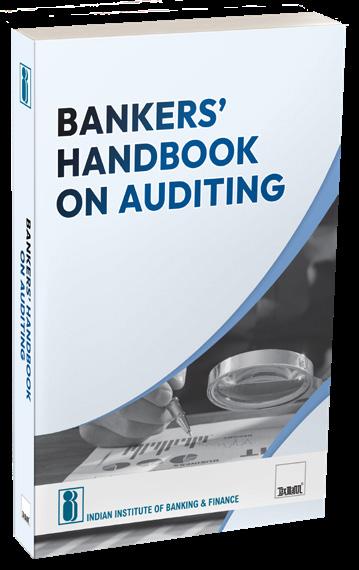






























































Toenablethereadertounderstand :
inherent limitations
Economicdecisionsineverysocietymustbebaseduponthe available atthetimethedecisionsaremade. Forexample thedecision abanktosanction aloantoabusinessisbasedupontheprevious relationshipswiththat business the condition thecompanyas byits statementsandother .
thedecisionsaretobeconsistentwiththeintention thedecisionmakers the usedintheDecisionProcessmustbereliable. Unreliable cancause use resourcestothedetriment thesocietyandtothedecisionmakersthemselves. Inthelendingdecision example assumethatthebank sanctionstheloanonthebasis misleading statementsandtheborrowingcompanyisultimatelyunabletorepay. aresult thebankwillloseboththe principleandtheinterest. Inaddition anothercompanythatcouldhaveusedthe wouldbedeprived themoneyandopportunity.
societybecomesmorecomplex thereisanincreasedlikelihoodthatunreliableinmaybeprovidedtodecisionmakers. Some thereasonsarelistedbelow :












( i
( ii )Data volume
( iii
ameans overcomingtheproblem unreliable thedecision-makersandotherstakeholderslikeshareholders investors etc. needan assurancemechanismtoensurethatthe providedtothem areliablebasis theirdecisions. This theverygenesis audit as audit is byindependentpersons. Theaudited is thenusedinthedecisionmakingprocessontheassumptionthatitisreasonably complete accurateandunbiased.
Thetermauditisderived theLatinterm ‘audire’ whichmeanstohear. Inearly days anauditorusedtolistentotheaccountsreadoverbyanaccountantinorder tocheckthem.
Thepractice auditingisasoldasaccounting. ItexistedevenintheVedicperiod. HistoricalrecordsshowthattheEgyptians theGreeksandtheRomansusedtoget thepublicaccountsscrutinizedbyanindependent . TheVedascontainerencetoaccountsandauditing. ‘ ’ byKautilya contains detailedrules accountingandauditing public . Inhisbook Kautilyastatedthat “ all undertakingsdependonfinance, henceforemostattentionshouldbepaidtothe treasury”.
Theobjective auditinginitiallywastodetectandpreventerrorsand evolvedandgrewrapidly theindustrialrevolutioninthe18thCentury. Withthegrowth theJointStockCompanies theownershipandmanagement becamedistinctanddifferent. Theshareholders whoweretheowners neededa report anindependentexpertontheaccounts thecompanymanagedbythe Board Directorswhoweretheemployees.
Theobjective audit andauditwasexpectedtoascertainwhethertheaccountsweretrueand ratherthandetection errorsand
InIndia theCompanies 1913madeaudit companyaccountscompulsory. Withincreaseinthenumberandasalsosize thecompaniesandthevolume transactions themainobjective audit toascertainingwhethertheaccounts weretrueand ratherthantrueandcorrect. Hencetheemphasiswasnoton arithmeticalaccuracybutona representation the
TheCompanies 1913alsoprescribed the timethe auditors. now ChapterX TheCompanies 2013 (Section139toSection 148) dealswith Itdealswiththeappointment auditors their
7




removal resignation eligibility remuneration powers tiesandauditingstandards.


TheInternational StandardsCommitteeandThe Standards Board TheInstitute Chartered India ( ) havedeveloped standardsonaccountingandauditingpracticestoguidetheaccountantsandauditors intheirdischarge duties.
Thelaterdevelopmentsinauditingpertaintotheuse computersinaccounting andauditing.
Conclusion
Inconclusionitcanbesaidthatauditinghascomealongway hearingaccounts totakingthehelp computerstoexamineaccounts. Withtheadvent technology andrapidchangestakingplaceintechnologyandemergence variousrisks the importance dataanalysishasincreasedtoagreatextent. Computer Techniques ( ) havebecomeapart theaudittoprocessdata auditsigandtoimprovethe and theauditprocess.
Thus whiletheoverallobjectiveandscope auditdonotchangesimplybecause thedataismaintainedonComputers theprocedures bytheauditorinhis studyandevaluation
( a )the accounting system
( b )related Internal Controls
( c
are inaComputerised Systemenvironment. Procedures arenow ‘ AuditingaroundtheComputer’ to ‘Auditingthrough thecomputer’. Inpresentdayaudit, thereisparadigmshiftfrom ‘ticks’ to ‘clicks’.
Thetermauditing/audithasbeen by authors/entitiesasunder: ( i -
respects it is untrue or incorrect.”
( ii ) Prof. L R Dicksee which they relate.”






( iii ) The International auditing practices committeeination is conducted with a view to express an opinion thereon.”
( iv )The book “An Introduction to Indian Government Accounts and Audit ” issued the expenditure has been incurred with due regularity and propriety. The
( v ) Wikipedia -
( vi ) Investopedia -
( vii
audit evidence [ i.e.
Sr.
No. Details
A issystematicand examination thebooks account abusiness/non-businessentity.
B isa theresultsshownbythe Loss andthestate asshownbytheBalanceSheet.






C isacriticalreview thesystem accountingandInternalcontrol.
D ison-site activity suchasInspectionorexamination processorqualitysystem toensurecompliancetoregulatoryand otherlaiddownrequirements.
E isundertakenbyanindependentpersonorbody personswho areduly thejob.
F isdonewiththehelp vouchers documents and explanationsreceived theauthorities abusiness/non-business entitytoevaluateevidence documentationandeconomicaspects a transaction.
G Theauditorhasto abouttheauthenticity the statementsandreportastowhetherthesameexhibitsatrueand view thestate theconcern.
H Theauditorhastoinspect compare check review scrutinisethe voucherssupportingthetransactionsandexaminecorrespondence minutesbook shareholders directors Memorandum and byelawsetc inordertoestablishcorrectness thebooks account.
Withoutasystem internalcontrolsorauditsystemsto the thereanentitywouldnotbeabletocreatereliable statements internal orexternalpurposes. anauditsystemiscrucialinpreventingmaterial misstatementsinan entity’s statements.
Themainpurpose anauditistoprovide






Thusthebasicpurpose anauditcanbedescribedas:
C.To ensure compliance with established internal control procedures by examining organisation.
Thescope auditisincreasingwiththeincreaseinthecomplexities thebusiness. Itissaidthatthelong-termobjectives auditshouldbetoserveasaguide totheManagement’s decisions. Thescope auditencompasses accountswithanintention givingopiniononitsreliability. Henceitcovers costaudit managementaudit social etc.
Itshouldberememberedthatanauditorjustexpresseshisopinionontheauthenticity theaccounts. Hehasnopowertotakeactionagainstanybody. Thatiswhy itissaidthat “ anauditorisawatchdogbutnotabloodhound.”
arebasicallyconcernedwith whethertheaccountsexhibitatrue and view thebusiness. Theobjectives auditingdependsuponthepurpose hisappointment.
Primary objective
accounts are prepared in accordance with the recognised accounting policiescial statements comply with the accounting standards.
(B) Secondary Objectives
sition to be misstated.
principles i.e. principle i.e . clerical errors.
I.Errors are mistakes committed unintentionally
TypesofErrors
Types of ErrorsDetails
Omission
will not agree and hence it can be easily detected.
C. Compensating Errors
as compensating error.
D. -






B. Commission -
ciple the accounting principles. These arise mainly due to the lack
treated as Capital Expenditure or vice versa.
E. Clerical Errors the above except D.






Itisnottheduty theauditorto theerrorsbutintheprocessingaccounts hemaydiscovertheerrorsintheaccounts. Theauditorshouldmay oneormore the procedureinthisregardtolocateerrorsand to same:
( a ( b ( c ( d ( e ( f mistakes etc.
Timely scrutinyistheonlyremedy detection errors.
isanerrorcommitted intentionally todeceive/tomislead/toconcealthe truthormaterial . Fraudsmaybe threetypes.
a . Misappropria-
takes place either by showing more payments or recording less receipts.
1. The cashier may show more expenses than what are actually incurred and may misuse the extra cash. e.g. showing wages to dummy workers.
Cash can also be misappropriated by showing less receipts.
“Teeming and Lading
Tillrecently theprincipalemphasiswasonarithmeticalaccuracy.






b . Misapproprianot issued to the production department and the goods may c . others. This is also known as “ Window Dressing”. It is very
TheCompanies requiredtheauditortostate interalia whetherthestatements accountaretrueand . Thisiswhatwecantakeasthepresentday auditobjective. Therehasbeena emphasis arithmeticalaccuracytothe question reliability the statements.
TheCompanies 2013 (section143) nowrequirestheauditortoexpresshis opiniononwhetherthe statementscomplywiththeaccountingstandards. Itisnotthemainobjective theauditortodiscover anderrors. But he anything asuspiciousnature heneedstomakeadetailedenquiryandverreporthis . Theprovisions theCompanies ( and ) Rules issuedinDecember require interalia ( Theserulesget amendedfromtimetotime ( lastamendmentcameineffectfromApril1, 2021 )
( a ( b
Thepublicgoodderived auditingisreasonableassurancethat statementsanddisclosuresare materialmisstatements.
The advantages variousviewpointsarederived audit :
( a ( b ( c






1 Protects interest Evaluates Financial Status
2Helps in Loan Formalities Moral check dividend
3Builds reputation Proper valuation -
4 assets Good Security accounts are treated as an auGovernment acceptaxation. Updated positionable then and there consideration
The inherent limitations are :
i.
ii.
the evidence available to the auditor can enable him to draw only an auditor is generally persuasive in nature rather than conclusive
There is also a likelihood that some material misstatements in the may not be detected.
Any system of Internal control may be ineffective against fraud involving collusion relating to transactions.
Sr. No.Limitations of Auditing Details
1 with mala fide intentions.
2Dependence on explanations by others






3 Dependence oners viz -
4 othersjudgment plays an important role. It
tions Financial Statements may not disclose are prepared on historical cost basis) Corrupt practices auditors The management may use corrupt the company.
8 Inherent lim-
ments liabilities. Many items are based on the true position.
9 Detailed checking not possible transaction.
AUTHOR : INDIAN INSTITUTE OF BANKING & FINANCE (IIBF)
PUBLISHER : TAXMANN
DATE OF PUBLICATION : DECEMBER 2023
EDITION : 2024 EDITION
ISBN NO : 9789357785990
NO. OF PAGES : 652
BINDING TYPE : PAPERBACK

Rs. 1075 | USD 44
The Bankers’ Handbook on Auditing was developed to address the most important aspects of bank auditing. It underscores the interlinkage and importance of an organisation’s robust accounting and auditing systems.
The focus area of this handbook revolves around the following:
u Introduction & Types of Audit
u Internal Audit
u Audit in a Computerised Environment
u Audit Aspects of Financial Statements of Banks
This book aligns with regulatory compliance and operational efficiency, especially in bank accounting and audit functions. The current edition has also been updated based on banking experts and internal faculty feedback, focusing on practicality and current digital trends.
The Present Publication is the 2024 Edition, updated by Mr Sampath Kumar K S, CA (Former Deputy General Manager – Indian Overseas Bank) and vetted by Mr Anil B Rane, B.Com. & LLB (Former General Manager – Bank of India). Taxmann exclusively publishes this book for the Indian Institute of Banking and Finance
ORDER NOW